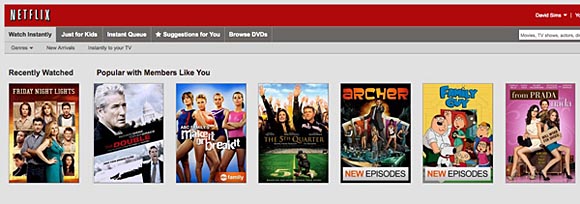Here are some of the commerce stories that caught my attention this week.
Smaller banks lagging in mobile channel
 Smaller financial institutions, which depend on a higher level of customer service to compete with the giants, are falling behind in the increasingly important mobile channel, according to a report by Javelin Strategy & Research. Javelin says about 37% of customers at big banks use mobile banking, compared with only 21% at regional and community banks and only 15% at credit unions. Javelin’s report suggests two reasons for this. First, community bank customers tend to be older, less well off, and less tech-savvy than customers at big banks. Second, big banks can invest more in online and mobile development and marketing, resulting in a better banking experience through those channels. (That’s certainly been my experience: my attempts to switch to a smaller bank were thwarted by a virtually unusable online banking system, which drove me back into the warm and fuzzy interface of a cold financial giant.)
Smaller financial institutions, which depend on a higher level of customer service to compete with the giants, are falling behind in the increasingly important mobile channel, according to a report by Javelin Strategy & Research. Javelin says about 37% of customers at big banks use mobile banking, compared with only 21% at regional and community banks and only 15% at credit unions. Javelin’s report suggests two reasons for this. First, community bank customers tend to be older, less well off, and less tech-savvy than customers at big banks. Second, big banks can invest more in online and mobile development and marketing, resulting in a better banking experience through those channels. (That’s certainly been my experience: my attempts to switch to a smaller bank were thwarted by a virtually unusable online banking system, which drove me back into the warm and fuzzy interface of a cold financial giant.)
Some smaller financial institutions say they benefitted from the anti-big-bank sentiment of the past year, epitomized by Bank Transfer Day on Nov. 5, 2011. Redwood Credit Union in Santa Rosa, for example, says its new membership was three times the normal rate last fall. But to keep that momentum going, Javelin suggests, financial institutions like Redwood will need to funnel some of their new income into development of these channels.
The report also found that mobile usage is beginning to surpass non-mobile online usage, even if those customers tap their accounts through a mobile browser. Most customers reach banks’ mobile sites through a browser on their phone. However, at the largest banks, which tend to offer a “triple play,” more customers use apps and SMS text instead of the browser.
 X.commerce harnesses the technologies of eBay, PayPal and Magento to create the first end-to-end multi-channel commerce technology platform. Our vision is to enable merchants of every size, service providers and developers to thrive in a marketplace where in-store, online, mobile and social selling are all mission critical to business success. Learn more at x.com.
X.commerce harnesses the technologies of eBay, PayPal and Magento to create the first end-to-end multi-channel commerce technology platform. Our vision is to enable merchants of every size, service providers and developers to thrive in a marketplace where in-store, online, mobile and social selling are all mission critical to business success. Learn more at x.com.How Netflix improves its recommendations
One of the interesting presentations at O’Reilly’s Strata conference this week was about how Netflix looks at its data to present recommendations of other shows members might like. Netflix streams 30 million shows a day. It has 5 billion ratings on those shows and collects another 4 million every day. Data scientist Xavier Amatriain discussed how Netflix uses the data from those ratings and other, more implicit data (including what people watch, which listings they mouse over to read, whether or not they finish programs) to offer recommendations that members will like enough to keep their accounts active, month after month.
Netflix gained a lot of attention a few years back with a broad open innovation initiative: it offered $1 million to anyone who could improve the Netflix recommendation engine by at least 10%. Amatriain said two teams tied for the prize with plans that improved the probability that Netflix could recommend shows that members would like based on their previous activities (though, he added, the cost of integrating those new recommendation engines into Netflix’ system may have exceeded their value). Even so, since 75% of shows watched on Netflix’s streaming service are based on recommendations, it’s more important than ever to offer something that will draw viewers’ interest.

The clues from all this data allow Netflix to present an array of recommendations to its members. First, there’s a row of “top ten” most likely shows. Of course, as Amatriain pointed out, these recommendations are based on viewing history and clues of the entire membership household, not just one viewer. For example, when I log on, along with the thrillers and comedies that Netflix recommends to me, there’s a fair amount of “Pretty Little Liars” and other teen dramas that my daughters might like. I used to wonder if this bizarre mix confused Netflix, but Amatriain’s talk has reassured me that the company understands what’s going on. Then, at a finer-grained level, there are “hyper genres” that Netflix can offer based on your track record: not just Kids Shows, but Goofy Kids Shows; not just Family Movies but Feel-good Father-Daughter Movies. Slicing the offerings narrowly improves the chances of a hit, and it’s no accident that the single most likely recommendation is the first one in each row.
Of course, the main complaint Netflix receives (other than its new price structure, I would imagine) is, “why don’t you have the show I want to watch?” Amatriain said the company also looks at implicit data to decide what new content to license. So when you search for a show that Netflix doesn’t offer for streaming, it gets noted. I guess if you really want it to show up, keep searching for it.
Opera enters the payment fray, PayPal and Home Depot go nationwide
Mobile World Congress, the humongous European conference on all things mobile, is happening this week and everyone loosely connected to mobile payments seemed to time an announcement around it. Here are some of the more interesting announcements that have come down the PR wire from Barcelona:
- Opera, whose Opera Mini browser has more than 160 million downloads, launched the Opera Payment Exchange (OPX). Opera says it wants to “democratize” the payment space by building a payment platform that works on more platforms and devices than Android and iOS smartphones. It says the OPX platform provides APIs that developers can use to integrate payment systems with the Opera Mini mobile browser.
- PayPal and Home Depot said they would roll out nationwide the payment program they have been piloting in a handful of Bay Area stores over the past six weeks. The program is a significant step for PayPal, bringing its payment system offline and into the physical retail world. Customers can buy hardware and other stuff on their PayPal account, with a PayPal card or with a mobile number and PIN — no NFC required.
- Isis, the mobile payments joint venture between AT&T, T-Mobile, and Verizon Wireless, announced more partners in its effort to build a payments ecosystem. Customers of Chase, CapitalOne, and BarclayCard will be able to load their payment information into Isis-compatible phones when they’re ready. Isis secured deals with the top four credit card companies (or “payment networks” to use the parlance) last July; now it’s making agreements with the banks (“issuers”). Isis is planning two pilots in 2012, in Austin and Salt Lake City, though it’s not clear what phones the technology will be in by then.
Tip us off
News tips and suggestions are always welcome, so please send them along.
If you’re interested in learning more about the commerce space, check out DevZone on x.com, a collaboration between O’Reilly and X.commerce.
Bank photo: Old Bank in Sunbury Village by Maxwell Hamilton, on Flickr
Related:
